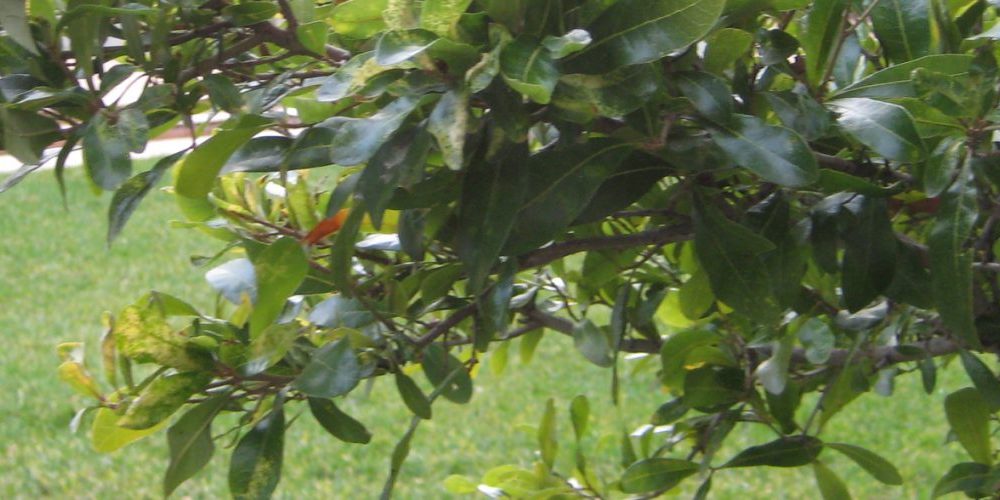The Live Oak is an evergreen that serves as a popular icon of the Southern landscape of Texas. It is also known to be a great addition to landscapes throughout Texas because of its durability, longevity, and fast-growing habits. This highly attractive plant grows horizontally along the ground then reaches upward, but landscapers and homeowners ten to choose an upright, trunked specimen when planting. The Live Oak can host other plants on its trunk and branches including:
- Ball Moss
- Spanish Moss
- Mistletoe
- Resurrection Fern
Although we mentioned earlier that this plant is an evergreen, it drops its leaves heavily in late winter when new foliage emerges. It is resistant to salt spray, drought, and poor soil qualities.
The leaves of the Live Oak are stiff and leathery. They can be identified by the shiny dark green color on top and the pale gray underneath. In the spring, green catkin flowers appear on the Live Oak growing up to four inches long. The flowers have been known to dump large amounts of pollen into the air. The acorns of the Live Oak are tan-brown and vary in size. They turn black in the fall.
The bark of the tree is thick and dark brown to black in color. As the tree ages, the bark forms large alligator-scale bark plates. The wood of the Live Oak is some of the heaviest of the oak family.
The tree is commonly used for fuel, grilling, and carpentry. The sprouts that come from the roots of the Live Oak can become a nuisance. Constant pruning is required to avoid growing a clump of trees. This oak is susceptible to the oak wilt disease known to kill many oaks throughout Texas.



